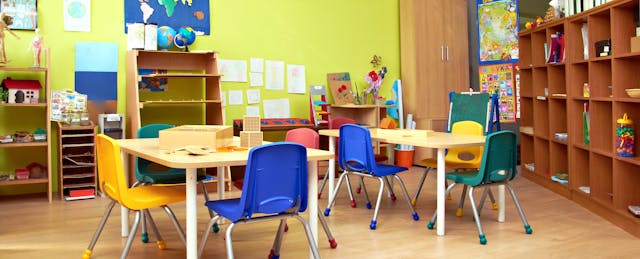The start of a school year means a new seating chart for each classroom—full of students that the teacher likely hasn’t met. Without knowing the students, how does a teacher know where to assign their seats?
This question comes up each summer as teachers strive to create the best learning environment possible. From my experience in the classroom, I’ve found that seating chart choices can be critical to how students engage with one another and the teacher.
Today, the influx of digital tools and new instructional models means that the traditional classroom settings of “quiet students, talking teacher” may no longer apply. Already, some teachers are letting go of tradition and allowing flexible seating in classrooms to give students freedom to choose where they want to sit. For others, placing students into assigned groups for cooperative learning can produce the optimal learning environment.
As each teacher develops their own style of seating students, their process involves weighing several factors to create their ideal classroom arrangement. But how does a teacher know what’s best for their classroom and which student dependencies should factor into these decisions?
Prep and Plan
The lead times for seating chart planning range from the moment the teacher receives the class roll to the first day of class. Some teachers wait until getting to know the students before assigning seats, with open seating in earlier weeks and a solid chart after seeing how students interact, focus, and learn. This reactive approach can work better for teachers who enjoy flexibility and adaptability.
Others take a proactive approach, often by asking previous teachers of those students for their feedback. While this warrants extra legwork at the beginning, polling fellow teachers about their previous students can sometimes help identify when seat placements are beneficial to how an individual student engages in class.
Consider Preferences
Options for seating arrangement type vary, from row-and-column grids to two-person tables to stadium seating. Some draw inspiration from their favorite popular hangout spots, like Starbucks. (But others warn against turning flexible furniture design into a fad.)
For more traditional layouts—whether in rows or in the form of a semi-circle arrangement—past research suggests that students who sit toward the center tend to participate more in classroom discussions.
Although a fixed seating chart does make it easier to remember students’ names, a teacher might decide to change up the layout regularly for a variable learning experience, some as often as every day and others about once a month. That’s not to say that change is necessary for everyone. As long as a classroom is functioning harmoniously, a fixed seating chart can remain unchanged throughout the year. If something doesn’t work, then the teacher can adjust until an arrangement sticks.
Other Factors and Dependencies
There’s more to a seating chart than telling a student where to sit, as many other considerations must be taken into account. Learning disabilities, academic performance, and vision problems could necessitate students being placed in the front of the classroom to ensure better learning and higher engagement.
Social considerations and partner compatibility are important to consider because some students work well with others, even if their socialization can be distracting. It’s common for friends to ask to sit together and not unusual for a teacher to separate them to avoid over-socialization. What they might later learn is that the friends complement and challenge each other in a positive way. Being open and malleable as a teacher creates opportunities for students to learn from each other collaboratively.
Clustering students into groups can also lead to learning environments that foster student collaboration. Previous studies conducted by psychologist and John Hopkins research director, Robert Slavin, points to positive outcomes from cooperative learning, in the form of students learning more, enjoying school and the subject, and feeling more successful.
Create a Culture, not a Classroom
It is integral for teachers to find a layout that suits their preference and instructional style, in ways that make them most engaging and effective. But it is also important to create an environment where students can support each other.
Grouping high level and low level learners together is useful in facilitating peer coaching, and heterogeneous groups can help each other in the learning process. In my experience, this method has been the most effective way to encourage a positive exchange for collective learning in a classroom community.
The seating chart is an underrated tool that can help turn a good learning environment into a great one. While there is no clear model for where to place students, if done correctly, a well-thought-out seating chart fosters an effective classroom environment that allows students to maximize their learning potential.


